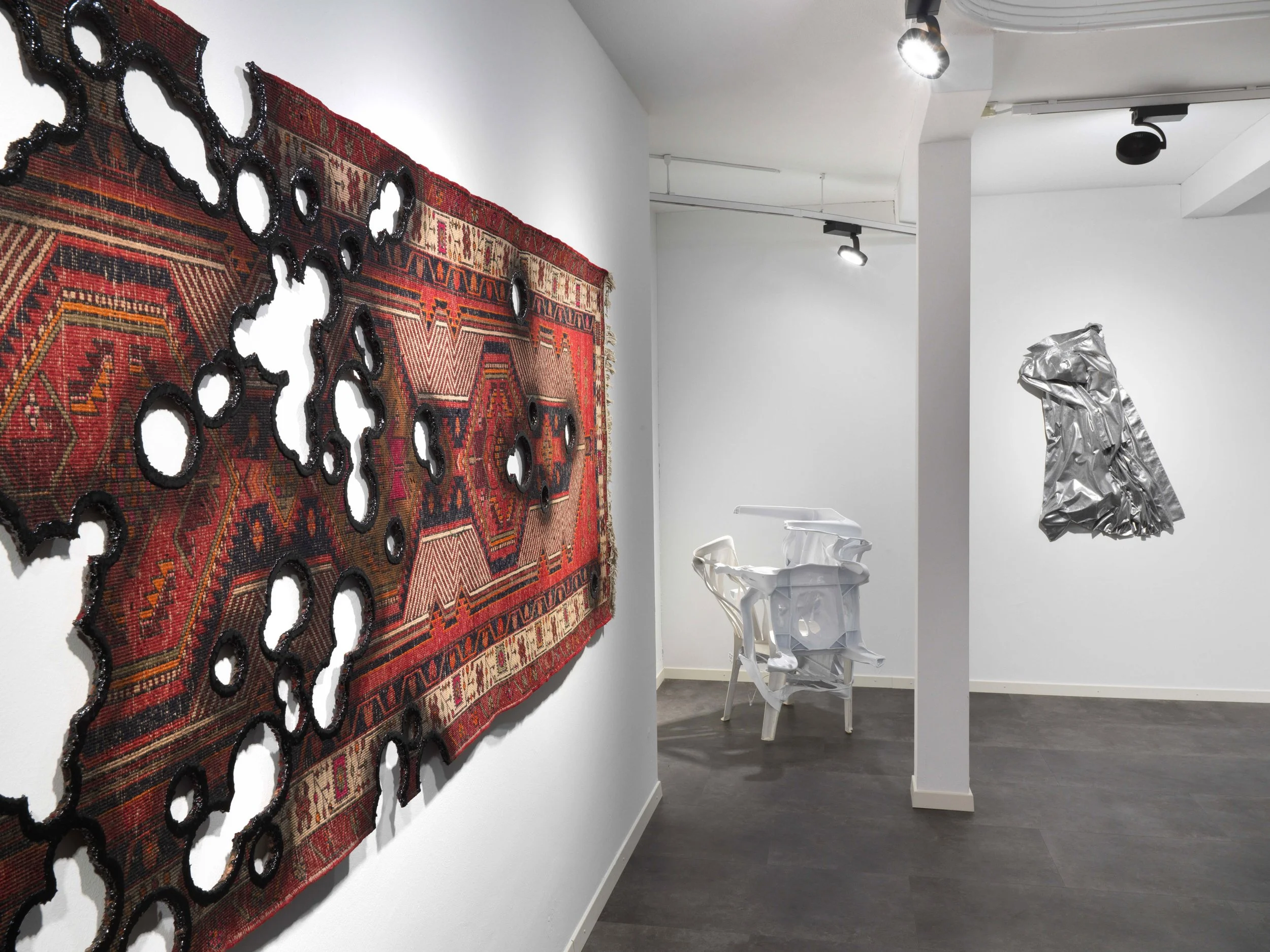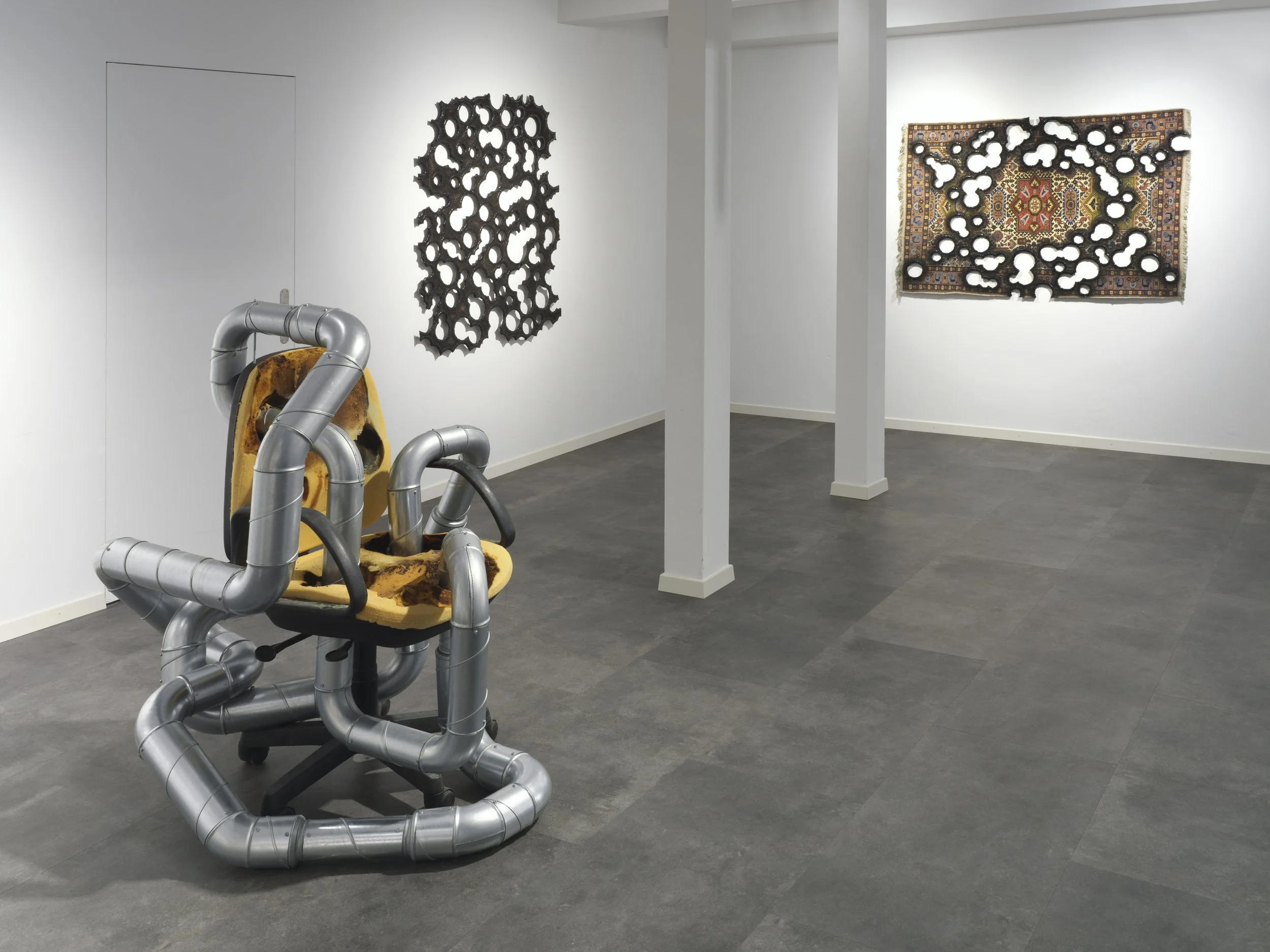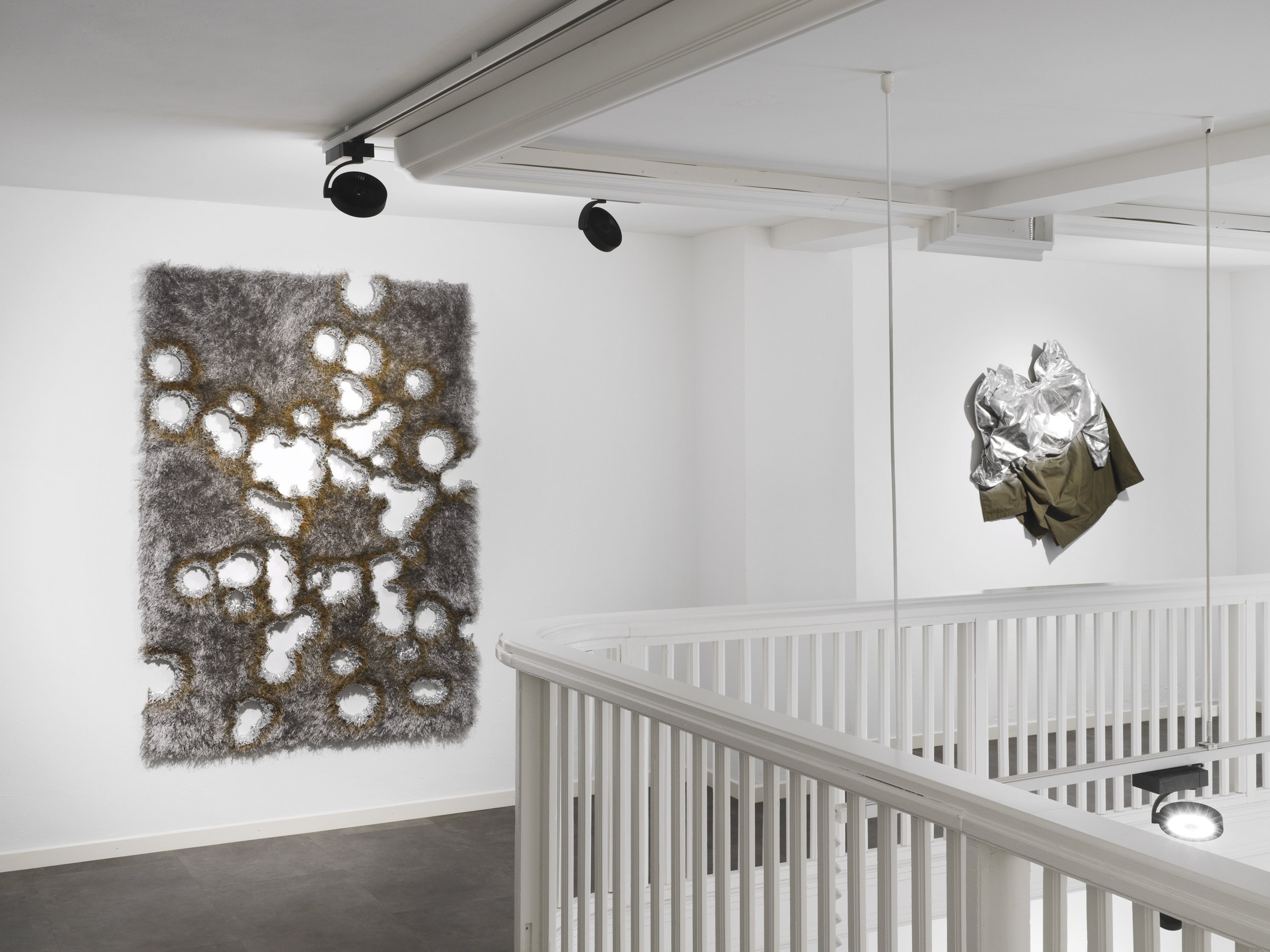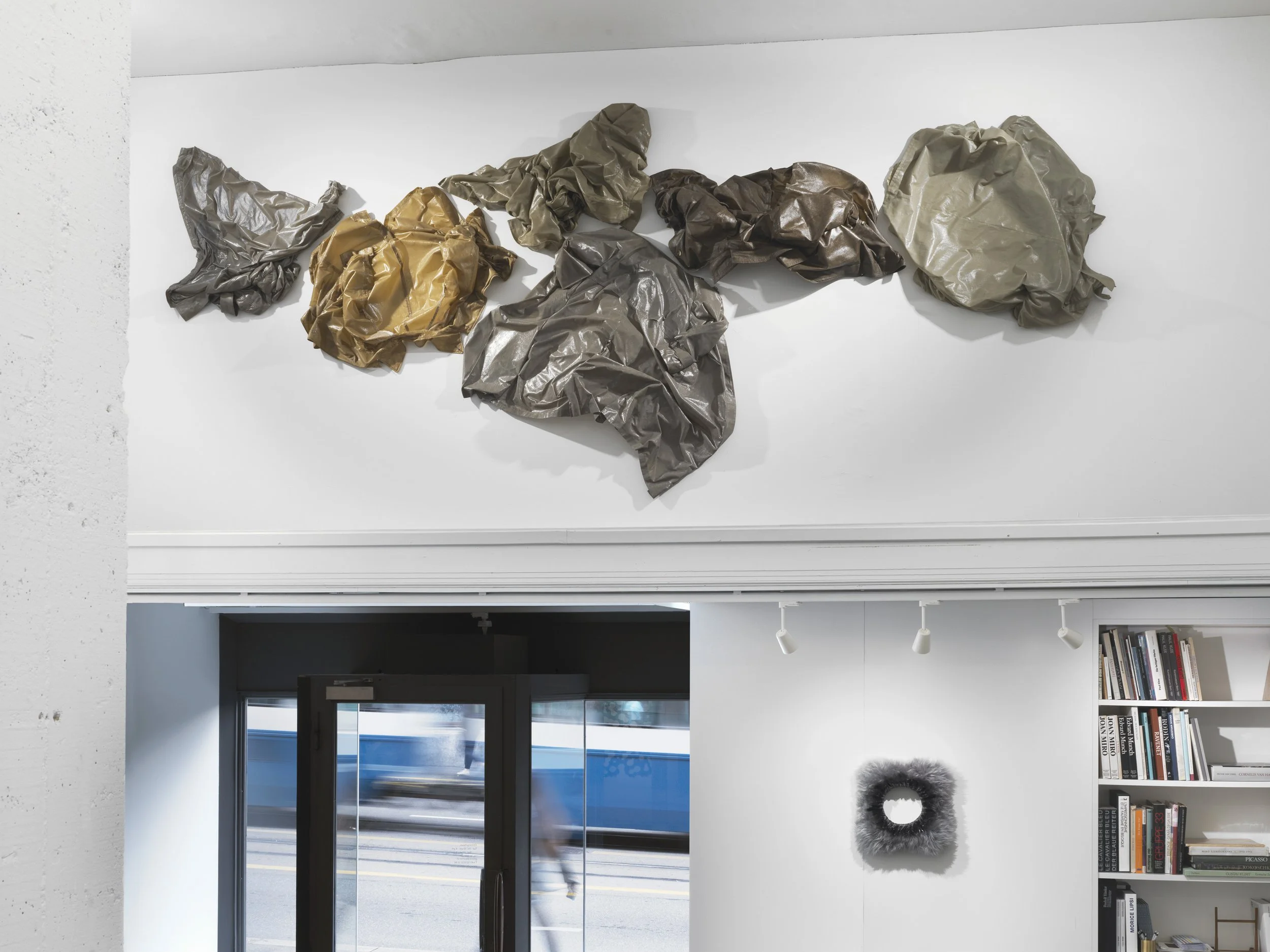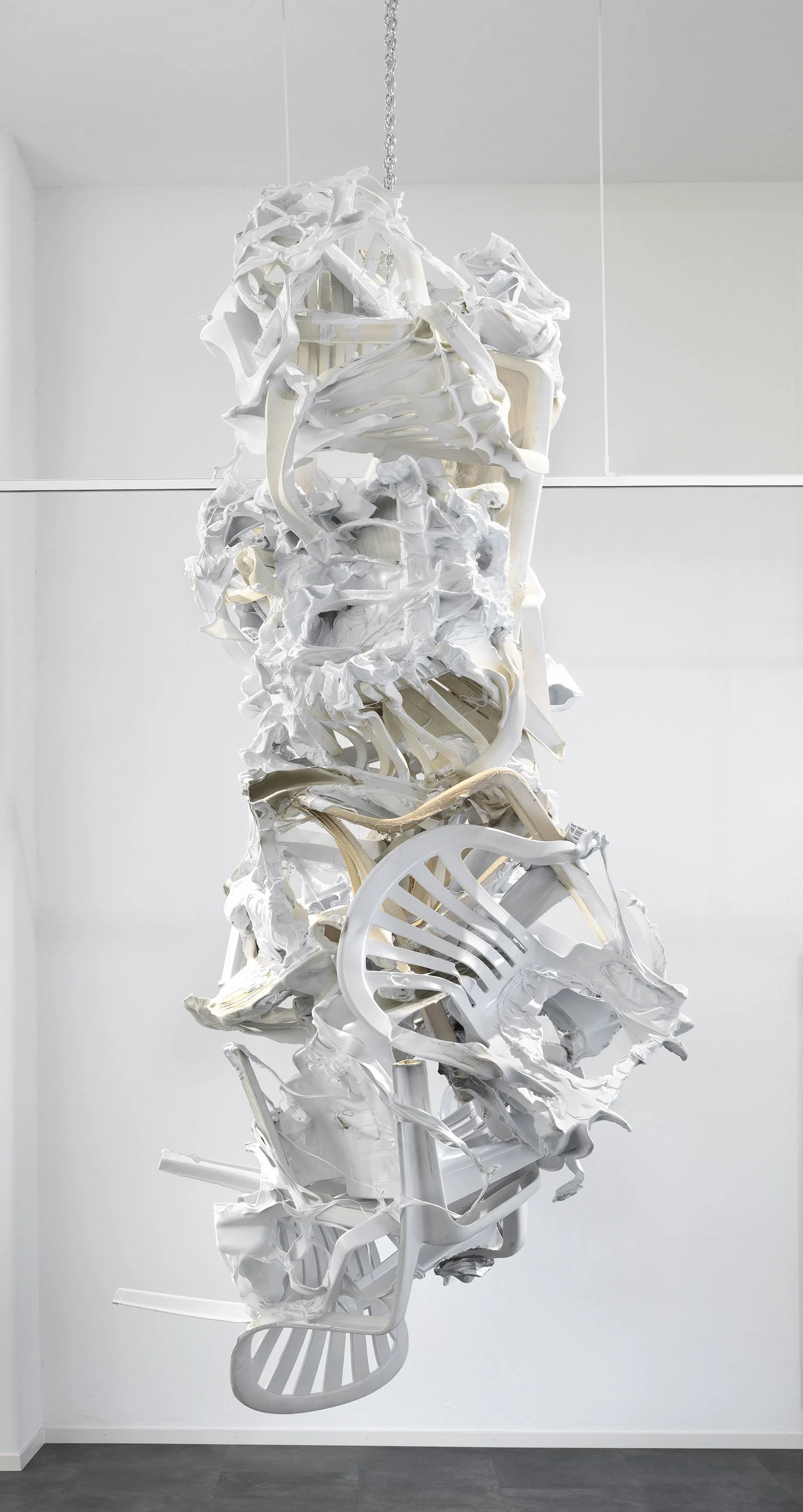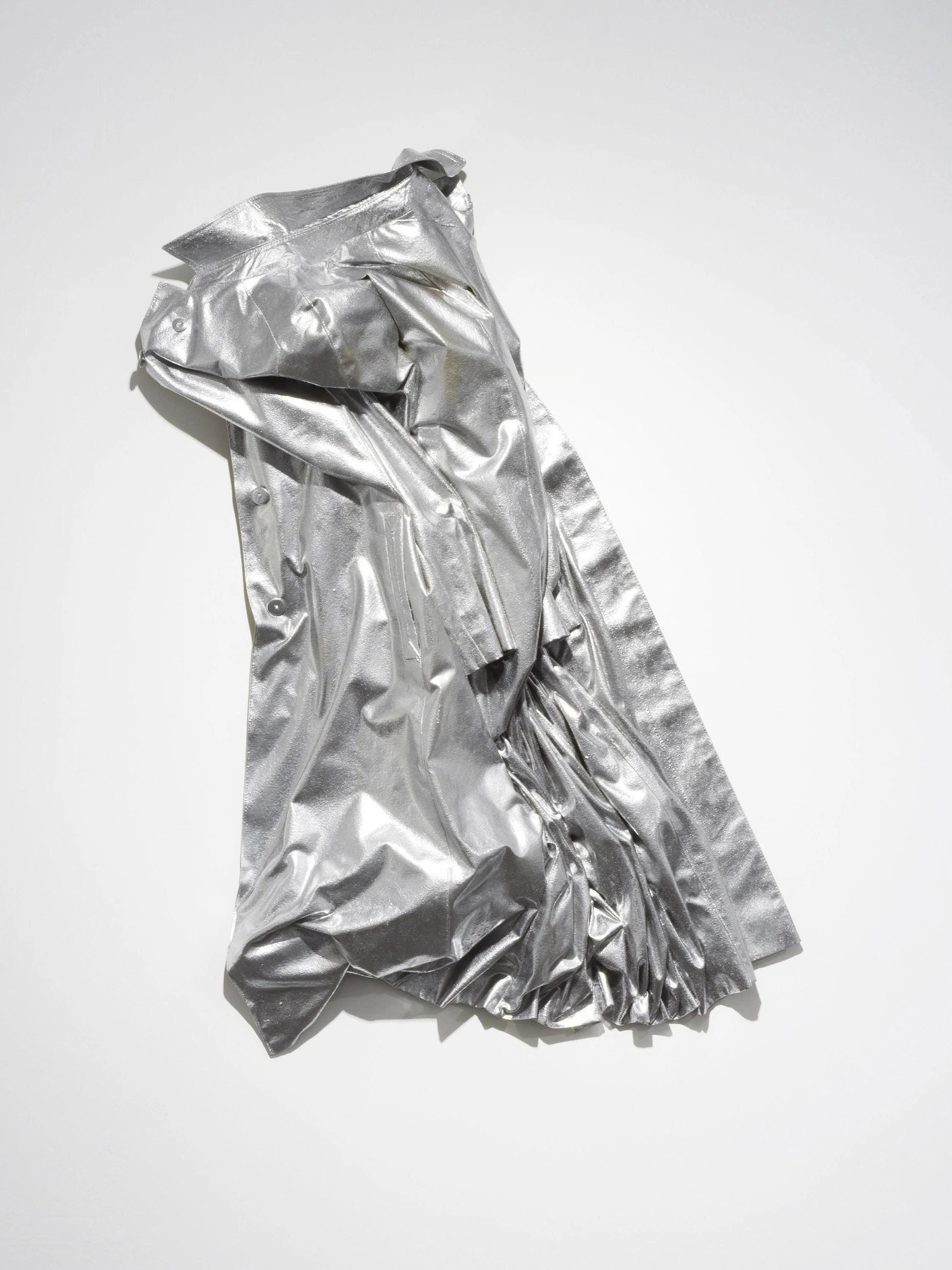Maya Bringolf: Light Up
18 September — 13 November 2021
Hole-ridden carpets. Scorched bedside rugs of manmade textiles. Fabric and ornament metastasized by a spray of bullets leaving new patterns of holes in its wake. But first impressions can be misleading. Maya Bringolf (born in 1969 in Schaffhausen, now living and working in Zurich) does not burn holes in home accessories. She cuts circles out, painstakingly brushes epoxy resin onto the damaged fabric to strengthen it, and then applies black acrylic spray paint to simulate smoke damage. Toxic materiality pervades her work, gnawing its way through a backdrop of bourgeois home decor. An undeniably sacrilegious violation, but one that breathes an unfathomable opulence, an unworldly beauty into each item. These objects – which languished just a few weeks ago in the back rooms of second-hand stores or heaped up in mail-order depots – are henceforth showcased by white walls, a cloudscape of contrast toying with flower tendrils and cross motifs. Pitch black and silver halos give each aperture a sombre aura, an incorporeal presence. “The origin of carpets is out there somewhere, but it was swept away on the tide of globalization long ago,” says the artist, summing up the ambiguity inherent in her raw materials. Maya Bringolf leaves a trail of destruction on her carpets – clashing headlong with the decline of cultural and material values.
For years now, Maya Bringolf’s artistic up-cycling has suggested a decadence balanced with discreet sophistication, as if domesticity were coming to an end and our comfort zones wanted to release their hidden, pent-up poison. The artist has no qualms about man-made synthetic materials even though – or precisely because – environmental pollution and dwindling resources have brought them into disrepute. The nervousness that has gripped our consumer behaviour is intrinsically linked to the real cycle of materials and their uncontrolled emissions.
As a performance-oriented society, we are under immense pressure to produce. Bringolf counteracts this time and time again with air flow. She removes pipe systems from their usual settings and relocates the air ducts found on the edges of large spaces and warehouses, making them the core of her transformative sculptures. Meanwhile, pipes have attacked the office chair too. Where does the air come from and where is it pumped out to? Can channelled airflow bring an overheated activity to a standstill? The request for regular ventilation has come to a standstill, the chair on casters is clutched and seized. An implacably warlike aura pervades an item of furniture found in every modern office. The scorched, “made in China” paradigm still glimmers with a burnout to which the whole world already seems to have succumbed.
Virtually no art can anticipate the imagery that will kindle connotations in our minds one day. This summer’s forest fires in Turkey and Greece have nurtured the vision of burnt furniture in our mind’s eye. The coronavirus pandemic has made constant airflow inside schools and businesses companies a rallying cry. The plight of refugees brings us face to face with those left high and dry by unwilling migration. So it is no coincidence that Bringolf’s cast-off trench coats merge with images of migrant misery. The coat is an outer skin that embodies the disposable cult, superfluous to survival, but the Burberry trench persists, exhibiting a desire for durability and elegance. Epoxy resin sealant and car paint bond tramps and police inspectors, scrap and chassis all together. The objects in our lives have crossed continents, peer out at us from family albums, and remind us of the history of film. In these never-ending cycles, we risk being smothered by stuff. Maya Bringolf’s art resounds with the echo of our bodies.
— Isabel Zürcher
Skeleton, 2021 Melted monobloc chairs 300 x 105 x 85 cm
Iron Coat III, 2019 Trench coat, epoxy resin, acrylic spray 110 x 83 x 15 cm
Deep Diving, 2021 Melted monobloc chairs 105 x 90 x 100 cm
Zero, 2021 Carpet, epoxy resin, acrylic spray 130 x 100 cm
